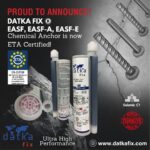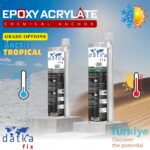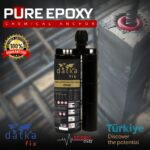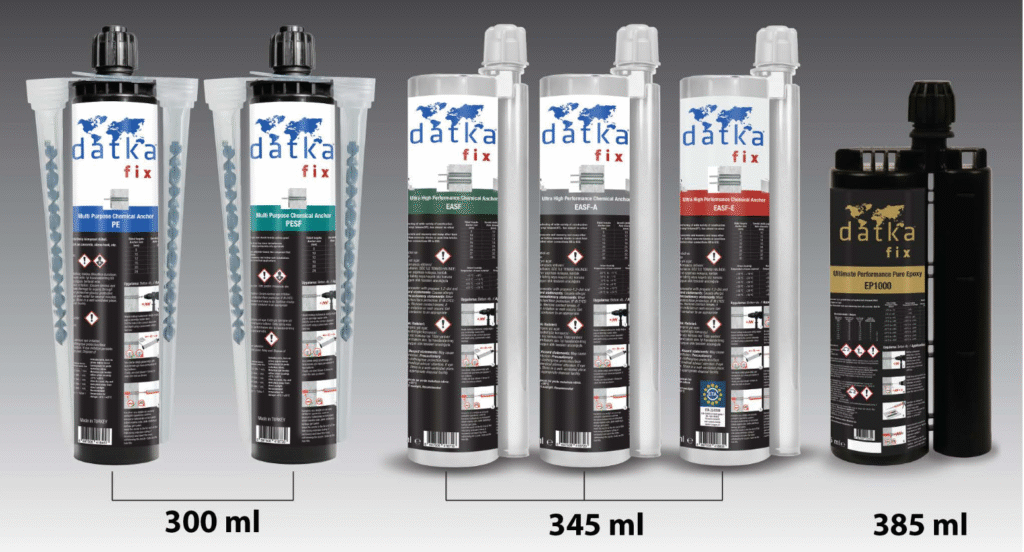
Our Chemical Anchors are...
➡ Suitable for use in various base materials, including concrete, masonry, and natural stone.
➡ Designed to handle high loads, both tensile and shear, making them suitable for structural applications.
➡The adhesive bond provides excellent resistance to vibrations and dynamic loads, making chemical anchors ideal for applications in seismic zones or areas subject to heavy machinery movement.
➡ Unlike mechanical anchors, chemical anchors do not exert expansive forces on the base material, reducing the risk of cracking or damaging the substrate.
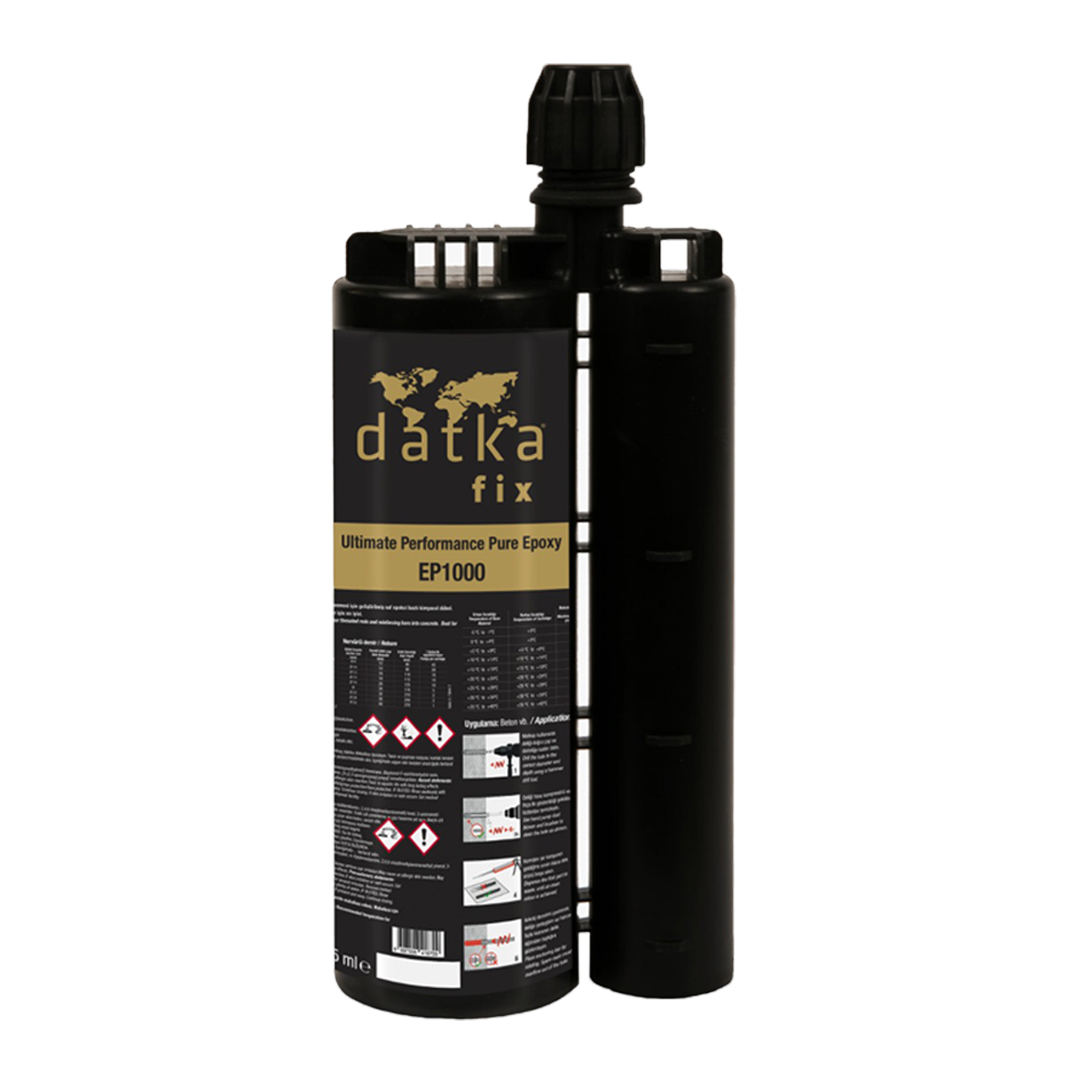
EP 1000 Pure Epoxy

Chemical Anchor
EP 1000 is an ultimate performance two-component pure epoxy bonding system designed for use in both cracked and uncracked concrete.
It performs flawlessly even in seismic conditions and at low temperatures down to –5°C.
With its fast curing time and exceptional strength, EP 1000 is the go-to choice for professionals seeking durability, reliability, and structural security in their anchoring solutions.
| MECHANICAL VALUES | RESIN TYPE | ETA APPROVAL |
|---|---|---|
| Low (4/10) | PE | Option 7 |
| PESF | Pending Option 7 | |
| Medium (5/10) | VE | On Process |
| VESF | On Process | |
| High (7/10) | EASF | Option 1 – Seismic C1 |
| Ultimate (9/10) | HUM | Pending Option 1 – Seismic C2 |
| Ultimate (10/10) | EP | Pending Option 1 – Seismic C2 |
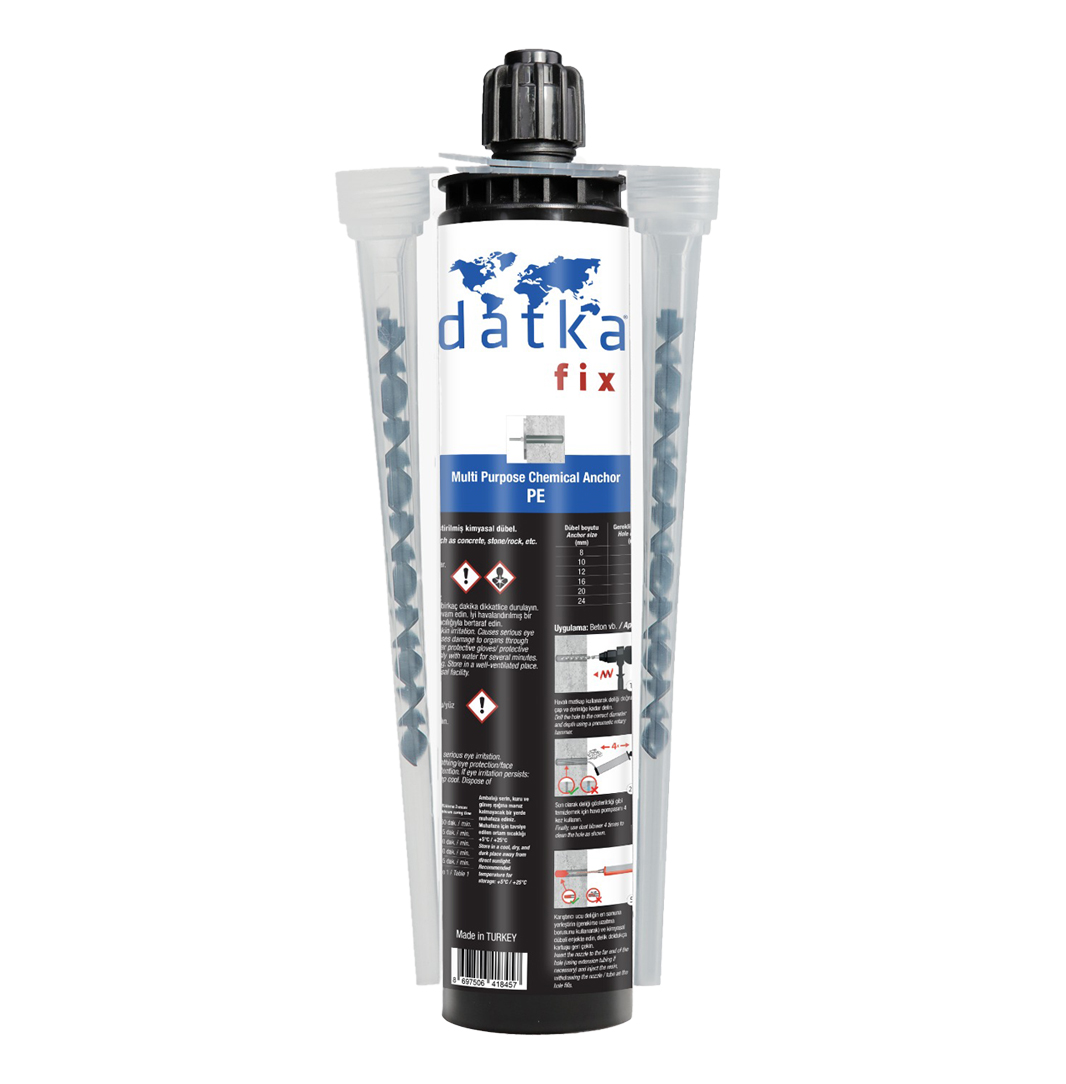
PE Polyester with Styrene

Chemical Anchor
Polyester with styrene is a high performance general purpose two-com-
ponent chemical anchoring system that has been formulated for anchor-
ing in a wide variety of building materials.
PE - normal gel and cure time (standard grade)
PE-E - slow gel and fast cure time for high-temperature environments
(extended gel time / tropical grade)
PE-C- fast gel and fast cure time for cold-temperature environments
(winter grade)
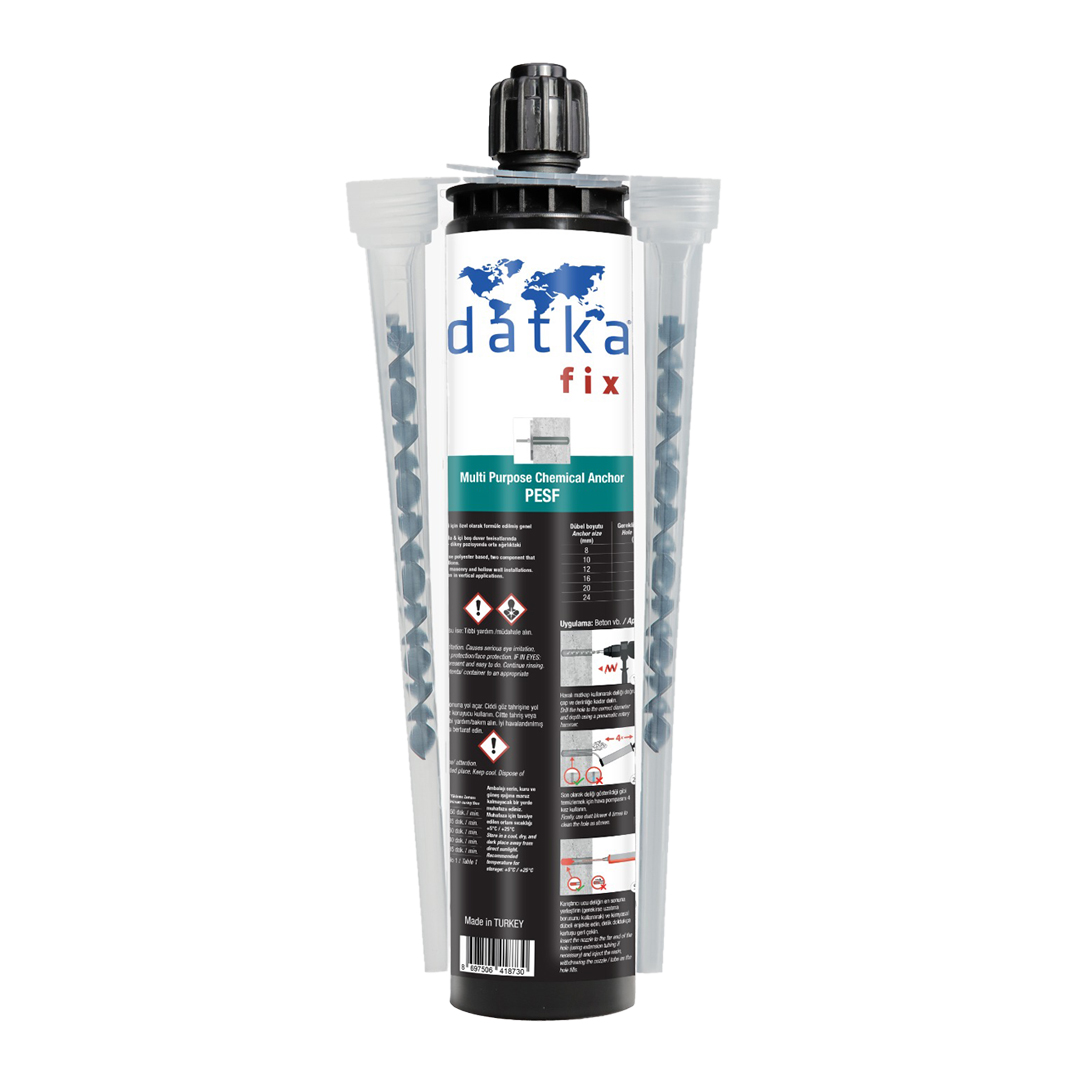
PESF Polyester Styrene Free

Chemical Anchor
Polyester styrene free is a universal bonded anchoring system for use in hollow and solid substrates within dry, wet or flooded conditions formulated free of styrene, PES has a very low odour and is ideal for use in confined spaces and indoors.
PESF - normal gel and cure time (standard grade)
PESF-E - slow gel and fast cure time for high-temperature environments
(extended gel time / tropical grade)
PESF-C - fast gel and fast cure time for cold-temperature environments
(winter grade)
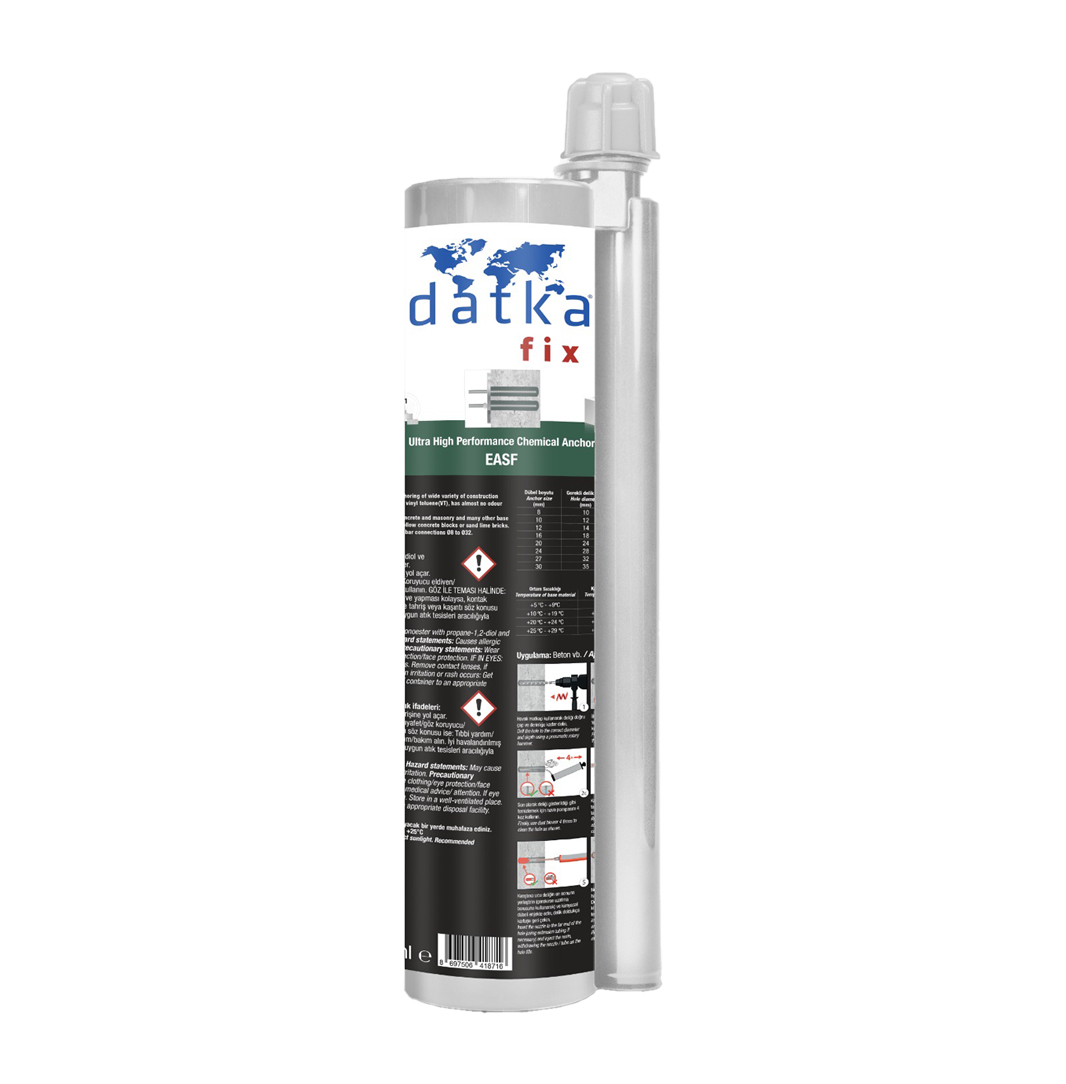
EASF Epoxy Acrylate Styrene Free

Chemical Anchor
EASF offers outstanding performance in concrete, masonry, and other substrates. It is ideally suited for high load/heavy duty structural anchor- ing applications of studs, threaded bars, starter bars and dowels. Being free of styrene, our EAS formulation has a very low odour and is well suited for use indoors and in confined spaces. It has a very low VOC content.
EASF - normal gel and cure time (standard grade)
EASF-E - slow gel and fast cure time for high-temperature environments
(extended gel time / tropical grade)
ÈASF-A - fast gel and fast cure time for cold-temperature environments
Applıcatıon
Wear appropriate safety gear including gloves, goggles, and a mask to protect against dust and chemicals.
Mark the spot where the anchor will be placed.
Using a hammer drill and the appropriate size bit (as specified by the anchor manufacturer), drill the hole to the required depth and diameter. Ensure the hole is straight.
Thoroughly clean the hole to remove all dust and debris. Use a wire brush to scrub the inside of the hole. Blow out the dust with a blow-out pump or compressed air. Repeat brushing and blowing out until the hole is clean and free of debris.
If using a two-part resin system, mix the resin and hardener according to the manufacturer's instructions. For cartridge systems, load the cartridge into the applicator gun and attach the mixing nozzle.
Insert the mixing nozzle to the bottom of the hole and begin dispensing the resin. Slowly withdraw the nozzle while continuing to inject the resin to ensure the hole is evenly filled with no air pockets. Fill the hole to about two-thirds full or as recommended by the manufacturer.
Insert the anchor rod or bolt into the hole by twisting it slightly to ensure even distribution of the resin around the rod. Push it down until it reaches the desired depth. The resin should overflow slightly to indicate the hole is fully filled.
llow the resin to cure for the specified time as per the manufacturer's instructions. Do not disturb the anchor during this period. Curing times can vary based on the type of resin, temperature, and humidity.
Once the resin has fully cured, inspect the anchor to ensure it is secure and properly bonded. Remove any excess resin around the hole.
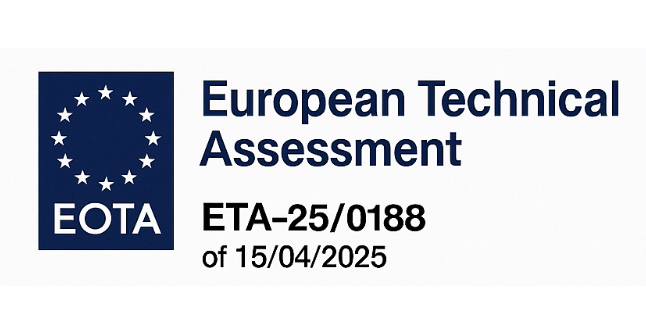
ETA Certification
We are proud to announce that Datka Fix EASF, EASF-A, and EASF-E Chemical Anchors are now officially ETA Certified.
This European Technical Assessment (ETA) certification confirms that our products meet the highest quality and performance standards required across the European Union.
View Registration DetailsUsage Areas
➡ Construction and Structural Applications
- Rebar Connections
- Concrete Repair and Retrofitting
- Column and Beam Connections
- Facade Installation
➡ Industrial Applications
- Machinery and Equipment Anchoring
- Pipe and Cable Tray Supports
- Railing and Safety Barrier Installation
➡ Infrastructure Projects
- Bridges and Tunnels
- Highway and Road Construction
➡ Residential and Commercial Buildings
- Balcony and Canopy Supports
- HVAC and Plumbing Fixtures
- Staircases and Handrails

